It's Monday.
It's raining. I'm going to be lazy and put up this lovely video with it's gorgeous music (from Hans Zimmer's The DaVinci Code score). Enjoy:
It's Monday.
It's raining. I'm going to be lazy and put up this lovely video with it's gorgeous music (from Hans Zimmer's The DaVinci Code score). Enjoy:
Kim Roberts, a frequent contributor and reviewer of books for White Crane, sent us this notice of two new books that have received laurels:
The Arts Club of Washington has announced the winners of the third annual National Award for Arts Writing. The $15,000 Award, although relatively new, has one of the largest purses of any annual book award in the U.S., and is the only award for non-fiction books on the arts for a general audience.
Winners must be living American authors, and books must be published in the U.S. in the previous year. The award honors and encourages excellence in writing (“prose that is lucid, luminous, clear and inspiring”) and can be on any artistic discipline. Considering how jargon-laden much arts writing has become in recent years (particularly writing about the visual and literary arts), this emphasis on a general, rather than specialist, audience is refreshing. The award goes to books that help readers build a strong connection with arts and artists.
For the first time in the Award’s history, there are two winners, and the books make a fascinating study in contrasts. The winners are:
Michael Sragow, for
Victor Fleming: An American Movie Master (Pantheon Books)
and
Brenda Wineapple, for
White Heat: The Friendship of Emily Dickinson & Thomas Wentworth Higginson (Knopf)
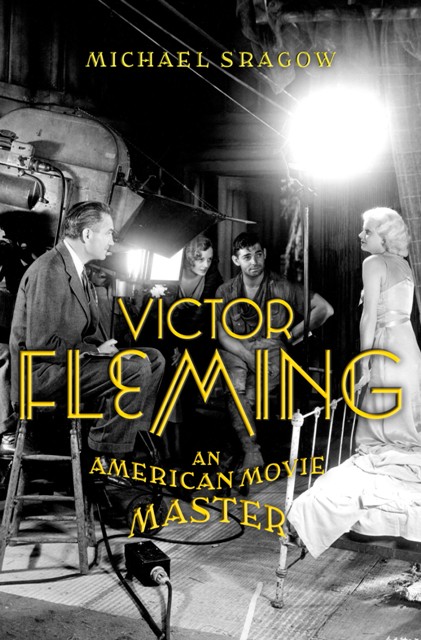 Fleming was the movie director best known for Gone With the Wind and The Wizard of Oz, and Sragow’s book is the first full-length
Fleming was the movie director best known for Gone With the Wind and The Wizard of Oz, and Sragow’s book is the first full-length 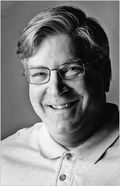 biography of this fascinating man. Some of the strongest writing in the book describes how Fleming developed screen personas for such leading men as Clark Gable, Spencer Tracy, and Gary Cooper, often based on his own experiences. Sragow argues that Fleming developed characters of idealized American masculinity, creating a new definition for a “strong, silent type” who was forceful, charismatic, and vigorous.
biography of this fascinating man. Some of the strongest writing in the book describes how Fleming developed screen personas for such leading men as Clark Gable, Spencer Tracy, and Gary Cooper, often based on his own experiences. Sragow argues that Fleming developed characters of idealized American masculinity, creating a new definition for a “strong, silent type” who was forceful, charismatic, and vigorous.
He writes, “The stars he helped create have never stopped hovering over the heads of Hollywood actors, who still try to emulate their careers, or of American men in general, who still try to live up to their examples. The director’s combination of gritty nobility and erotic frankness and his ability to mix action and rumination helped mint a new composite image for the American male. Fleming’s big-screen alter egos melded nineteenth-century beliefs in individual strength and family with twentieth-century appetites for sex, speed, and inner and outer exploration. His heroes were unpretentious, direct, and honest, though not sloppily self-revealing.”
![BrendaWIneapple_by_Joyce_Ravid[1]](/wp-content/uploads/2009/04/6a00d8345161a069e201156f6717d1970c-120wi.jpg)
 Wineapple’s book, in contrast, captures something of Emily Dickinson’s elusive spirit, as she initiated and sustained a friendship with Thomas Wentworth Higginson, her long-time confidant. Wineapple argues that Dickinson cannily sensed that he would be a sympathetic reader, because Higginson, a former pastor who frequently wrote for The Atlantic Monthly, was also outspoken on issues of abolition of slavery and women’s rights. She was also befriending the man who would later make the posthumous publication of her poems possible.
Wineapple’s book, in contrast, captures something of Emily Dickinson’s elusive spirit, as she initiated and sustained a friendship with Thomas Wentworth Higginson, her long-time confidant. Wineapple argues that Dickinson cannily sensed that he would be a sympathetic reader, because Higginson, a former pastor who frequently wrote for The Atlantic Monthly, was also outspoken on issues of abolition of slavery and women’s rights. She was also befriending the man who would later make the posthumous publication of her poems possible.
On the selection of the two winners, judge David Kipen says, “The idea of the passionate but chaste Emily Dickinson on a blind date with Byronic, swashbuckling Victor Fleming, if only for one night, encompasses precisely the breadth of inspiration that these awards exist to honor.”
The Arts Club of Washington will begin accepting books published in 2009 in June for consideration for the next award. There is no entry fee. Publishers, agents, or authors may submit books; three copies of each book and the official entry form are required. The deadline for the next award is October 1, 2009. Full guidelines and entry forms may be found at: http://www.artsclubofwashington.org/award.html.
Kim Roberts is the administrator for the National Award for Arts Writing. She previously wrote about Emily Dickinson’s Herbarium for White Crane (Issue #73).
I was sad to read that Bea Arthur passed this weekend. Over the years I've heard rumors that she was a Lesbian, and it isn't hard to believe. But I don't know it for a fact. It would fit, though, with my remembrance of this strong, smart, brave woman. I had personal history with her.
In 1976 I moved to Los Angeles from San Francisco, where I had just been "the naked guy" in Clint Eastwood's The Enforcer. I had no lines, but because I was required to be naked in the scene, I was given my Screen Actors Guild card, the holy grail for a budding actor. Much to my chagrin, you won't find me in the credits, but I'm the naked guy on the bed in the scene when the bad guy, whose being chased by Dirty Harry, falls through the skylight and crashes into the midst of a porn movie being shot. My mother was so proud. All I see when I watch it now is that I once had a beautiful head of hair.
But I digress…I moved to Los Angeles (as crew with A Chorus Line, another story), and, as is my wont, got involved with SAG union activities. I was serving on the SAG Morals & Ethics Committee in 1977 when Anita Bryant announced that she was bringing her pitiful, small-minded ignorance, intolerance and fear to California in the form of support for State Senator John Briggs' Proposition 6, the Prop 8 of the day, that would have forbid Gay people…or any of their supporters…from holding teaching jobs in California. Nice, huh?
I decided that the Screen Actors Guild needed to be the first industry union to come out against Prop 6, and that the only way to accomplish that was to get some big star power to appear before the Morals & Ethics Committee and demand it.
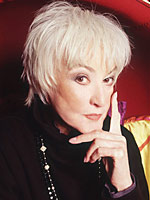 Enter Bea Arthur. Ms. Arthur had just made a splash in Norman
Enter Bea Arthur. Ms. Arthur had just made a splash in Norman 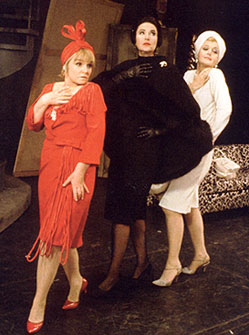 Lear's Maude, and would receive the first of two career Emmy's (the other for Golden Girls) that year for her groundbreaking work as the title character. On television, there just wasn't a bigger star. And if the only role she'd ever played was Vera Charles opposite Angela Lansbury in Mame, she would forever be a star in my firmament, (and opposite Lucille Ball in the film even if Lucille Ball was miserably miscast).
Lear's Maude, and would receive the first of two career Emmy's (the other for Golden Girls) that year for her groundbreaking work as the title character. On television, there just wasn't a bigger star. And if the only role she'd ever played was Vera Charles opposite Angela Lansbury in Mame, she would forever be a star in my firmament, (and opposite Lucille Ball in the film even if Lucille Ball was miserably miscast).
But I digress, again…It was just about this time of the year that I sat down and wrote a letter to Ms. Arthur, outlining my idea. I mailed the letter and didn't think anything more about it. It was a shot in the dark.
Weeks later, May 16th was my birthday, and I was getting ready to go out on the town with friends. Literally, just as we were heading out the front door, the phone rang (cell phones were still a Dick Tracy fantasy…I could still decide whether or not I was going to stop and answer). I picked up, said hello, and heard the unmistakable, gravelly contralto of Bea Arthur,
"Is Bo Young there?"
"Speaking," I said, my heart pounding out of my chest, my wide eyes popping out of their sockets as I pantomimed to my friends at the door, who were wondering what was going on.
"Well hello," she growled on, "I just wanted to let you know that I received your letter and I wanted you to know I'll do whatever you want me to do."
To which I responded, with breathless gratitude, "Oh god bless you Ms. Arthur!"
To which she responded, "What's this 'god bless you' shit?…I didn't sneeze."
The surprise was finding out, later, just how shy a woman this powerhouse actor was. When I met with her she insisted that I write something for her to say when she came before the committee because she was sure she would become tongue-tied and not be effective. Maude. Not effective. Right. She did everything I asked, just as promised, to perfection. Reading my lines to the committee, which immediately came through with the required vote, which then went on to the larger Steering Committee of the Screen Actors Guild, which was the first industry union to oppose the Briggs Initiative. As a result I was brought into the campaign as "assistant state press secretary" to Sally Fisk.
Later, I had cause to call Ms. Arthur again, to see if she would appear at a fundraiser we were holding for No On Six. Unbeknownst to me, she had undergone a face lift just weeks before, and as a result her face was still puffy and black and blue.
She still had bandages on her face, albeit small ones…and she appeared at our fundraiser.
She said it was more important than what she looked like.
That's the kind of person Bea Arthur was.
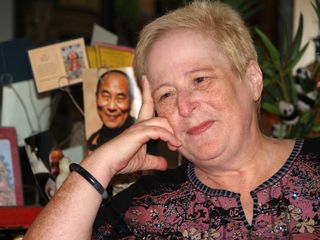 Is that a lovely face or what?…
Is that a lovely face or what?…
Eve Kosofsky Sedgwick was an American theorist in the fields of gender studies, queer theory (queer studies) and critical theory, which mainly means she was concerned with how many queer angels were dancing on the heads of academic pins. Influenced by Michel Foucault, Judith Butler, feminism, psychoanalysis and deconstruction, her work reflected an abiding interest in a wide range of issues and topics including something called queer "performativity"…whatever the hell that is…and performance; experimental critical writing; the works of Marcel Proust; artists' books; Buddhism and pedagogy. Academic polemic gobble-de-gook aside…she was a friend to the LGBTQ community.
Surprising to some, she was married for 40 years to her husband, Hal Sedgwick, a CUNY professor of visual perception (optometry), but apparently only saw him on weekends. She would also prefer it to be reported in that manner, i.e. she was married to a man, as opposed to assigning her the "straight" or "hetero/homo" categorizations (a too conveniently neat division rejected by Sedgwick.)
Sedgwick wasn’t a household name, unless you count the brouhaha over her 1989 essay Jane Austen and the Masturbating Girl, which featured in many of the ritualistic first-kill-all-the-professors stories from our long culture war.
Sedgwick’s books, including “Between Men” and “Epistemology of the Closet,” were on the shelves of most of the graduate students and comp-lit survivors, Gay and non-Gay, queer and non-queer, back in the 1990s. She virtually invented the field, or at least brought it to new heights. My personal favorite was an essay entitled How To Bring Your Kids Up Gay: The War on Effeminate Boys. If that was all she ever wrote she'd be worthy of laurels, from the aeries of the academe and the mundane streets alike.
Sedgwick’s radical challenge to heteronormative ways of reading and living may seem quaint (if that’s the word) in a time when people are celebrating same-sex weddings in Iowa and the White House Easter egg hunt conspicuously includes Gay and Lesbian families. Perhaps the misty future evoked in Pace University professor of English and women's studies, Karla Jay’s review of “Tendencies” — one where Sedgwick would be photographed shaving fellow queer-studies scholar Terry Castle on the cover of Time magazine, à la Cindy Crawford and K. D. Lang — isn’t quite here.
But alas, Eve Kosofsky Sedgwick, one of the foundational non-Gay allies, won't be around to see that future. She died April 12 of breast cancer. She was 58.
Our sincere condolences to her family and friends. In an age of anti-intellectualism and religious mythopoesis run amok, we need all the rational, intelligent voices we can find.
 Would someone please explain to me… why the new, pinhead, Archbishop of the New York Roman Catholic Archdiocese gets to comment on specific legislation being considered in the NY State legislature? Specifically the bill introduced by the Governor for Marriage Equality.
Would someone please explain to me… why the new, pinhead, Archbishop of the New York Roman Catholic Archdiocese gets to comment on specific legislation being considered in the NY State legislature? Specifically the bill introduced by the Governor for Marriage Equality.
If I am not mistaken aren't 501(c)(3) nonprofit, tax-exempt organizations specifically forbidden to lobby or act on behalf of specific legislation or candidates? Here's the relevant passage:
"An organization will be regarded as attempting to influence legislation if it contacts, or urges the public to contact, members or employees of a legislative body for the purpose of proposing, supporting, or opposing legislation, or if the organization advocates the adoption or rejection of legislation."
So if Archbishop Dolan…or any other church…follows through on this threat, shouldn't the IRS yank the New York Roman Catholic Archdiocese's tax exemption?
There are too many ways to count the ignorance (and make no mistake about it…they are ignoring reality in favor of dogma) of the Catholic Church and it's pointy-headed old men, but here are four things the Archbishop doesn't know about Marriage Equality:
1. There are few biblical verses that address homosexuality at all, and most of those are not directed at homosexuality per se. Opponents of same-sex marriage routinely cite seven verses in the Christian Bible as condemning homosexuality and calling it a sin. But when taken in context, these lessons speak not against homosexuality itself, but rather against rape, child molestation, bestiality, and other practices that hurt others and compromise a person’s relationship with God.
2. Jesus never said one word against homosexuality. In all of his teachings, Jesus uplifted actions and attitudes of justice, love, humility, mercy, and compassion. He condemned violence, oppression, cold-heartedness, and social injustice. Never once did Jesus refer to what we call homosexuality as a sin.
3. The Bible never mentions or condemns the concept we call same-sex marriage. Although opponents of same-sex marriage claim that lesbian, gay, bisexual, or transgender unions violate biblical principles, no verses in the Bible explicitly address gay marriage or committed same-sex relationships.
4. Those who claim a “biblical definition of marriage” as a model for today ignore various marital arrangements in the Bible that would be illegal or condemned today. The Bible is filled with stories of polygamy and husbands taking concubines. In accordance with the culture and laws of the past, women were often treated like property that could be traded or sold into marriage. Today we understand that these examples of marriage reflect the cultural practices of the time rather than a spiritual model for today.
Recently a woman in Wales wrote about her brother, a Gay man:
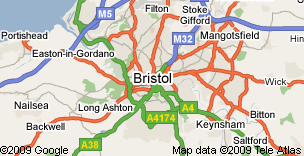 My brother M. has told me he is unhappy and lonely. He has told me he is weary of doing the rounds of the gay clubs (he's 48) and would like to connect with a community of mature thoughtful gay men, with a view to a long term relationship. He has not been able to find such a group as yet. If you have any data on any groups in the Bristol (southwest Britain) or Birmingham (midlands Britain) area, it would be gratefully received.
My brother M. has told me he is unhappy and lonely. He has told me he is weary of doing the rounds of the gay clubs (he's 48) and would like to connect with a community of mature thoughtful gay men, with a view to a long term relationship. He has not been able to find such a group as yet. If you have any data on any groups in the Bristol (southwest Britain) or Birmingham (midlands Britain) area, it would be gratefully received.
We don't really do personals anymore (the magazine used to offer a free one with each new subscription). And, aside from the obvious observances about "looking for love in all the wrong places"…perhaps there is a reader out there that has some information I could pass along to this loving sister?
To my mind this is a question of community…how do we connect with one another? Which becomes even more difficult as we age (no matter one's sexuality). And so many Gay men "of a certain age" lost lifelong connections and friends pre-HAART HIV therapies. A generation of elders was wiped out. Every death of an elder is like a library burning…
This is not the first letter of this sort we received. Only recently a reader in Chicago wrote, asking if we 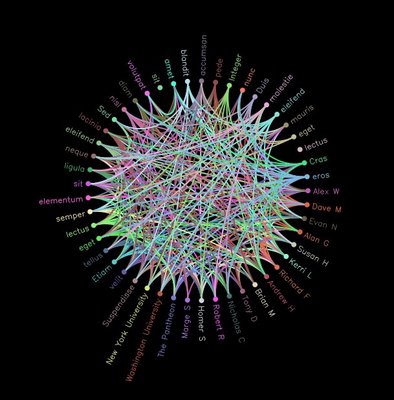 knew of any like-minded circles of Gay men. We have always encouraged the use of the magazine as a stimulus for face-to-face communities, the creation of circles of friends…Harry Hay's Circle of Loving Companions is our original model. And White Crane originated with a circle of Bob Barzan's friends in San Francisco, gathering at Bob's apartment to talk about everything under the sun (and share food!) How do we connect with one another?
knew of any like-minded circles of Gay men. We have always encouraged the use of the magazine as a stimulus for face-to-face communities, the creation of circles of friends…Harry Hay's Circle of Loving Companions is our original model. And White Crane originated with a circle of Bob Barzan's friends in San Francisco, gathering at Bob's apartment to talk about everything under the sun (and share food!) How do we connect with one another?
How do we connect with one another in meaningful ways? Sex works very nicely when you're twenty…but what happens to Gay men's community when you reach 40…50…60…?
If you know of any groups of Gay men in southwest or the midlands region of Britain, please write me at bo@gaywisdom.org
And more than that, if you have a similar interest in your area…rural or urban…will you let us know? We would like to help in creating those connections.

The Rainbow Key Award was created to recognize individuals and organizations whose efforts have significantly benefited the Lesbian and Gay community, and since 1993, has been bestowed upon more than 70 artists, educators, activists, civic leaders, and community organizations. The Award is presented by the City Council on the recommendation of the Lesbian and Gay Advisory Board. Nominations may be made by anyone, and nominees may labor in any area of endeavor; eligibility is not restricted by geography or sexual orientation.
The 2009 Rainbow Key Award for significantly benefiting the Lesbian and Gay community will be presented to White Crane friends and advisors Canon Malcolm Boyd and Mark Thompson by the City of West Hollywood at a civic event on June 17. The Lesbian and Gay Advisory Board of West Hollywood cites the couple for "showing by example that Gay, intergenerational partnerships can be stable, loving and long-lasting." This year marks the couple's twenty-fifth anniversary.
It couldn't happen to two nicer people.
 What to write about Jack Wrangler? In my memory, he was the first Gay porn star to hit the mainstream. How was that possible back in the early 80s? Somehow he reached my consciousness.
What to write about Jack Wrangler? In my memory, he was the first Gay porn star to hit the mainstream. How was that possible back in the early 80s? Somehow he reached my consciousness.
First there was the name. Jack Wrangler. Could it have been any more macho? The name was sex itself. Reading his obituary this morning, I'm struck at how his birth name had a bit of insistence to it. Jack Stillman.
But as is often the case with the image and the filmname, there was more to the story. Wrangler married a woman and had a very happy marriage with her. His wife, now widow, was Margaret Whiting, a music star in the 40s and 50s who was twenty years older than him. Her father Richard Whiting was the songwriter of a long list of songs including "Till We Meet Again", "Ain't We Got Fun?", "Hooray for Hollywood", "Beyond the Blue Horizon", "On the Good Ship Lollipop", "Too Marvelous for Words" (music only; words by Johnny Mercer). When Bo read me the list over the phone, I found myself humming along or singing the lyrics.
But back to Wrangler. What was interesting about his choices in his life after the porn career, was that he continued to describe himself as Gay. What to make of this? I don't know. He clearly made his choices and enjoyed his life. We mark his passing as an image that provided a sense of beauty and sex at the beginning of Gay consciousness for many of us.
A White Crane Conversation
George Birimisa turned 84 in February of this year. A Caffe Cino pioneer, he is recognized as one of the first American playwrights to write plays featuring Gay characters who were full-bodied people, not merely victims or villains. Still writing, and working as a writing teacher, editor and activist, George took time out from work on his memoir, Wildflowers, to talk with Steve Susoyev.
STEVE SUSOYEV: I had the honor of being present in 2006 when you won the Harry Hay award in San Francisco, for your work in Gay theater and as an “inspiration across the generations.” Among your students you’re known as a role model of Gay pride, but I understand your history is a bit more complex than that.
GEORGE BIRIMISA: When I got involved in theater in the late nineteen-forties, I went around trying to act like Marlon Brando as Stanley Kowalski, in a leather jacket, always with a cigarette hanging out of my mouth. I was living a contradiction, out of the closet to only a few people. Some of my plays are full of homophobia. In the early sixties I wrote my first Gay play, Degrees, but it was very mild and didn’t reflect me or my life at all. Inching my way out of the closet. But then, in Georgie Porgie, in 1968, I put it all out there, so the world would know I was Gay.
SUSOYEV: Georgie Porgie was a breakthrough for Gay theater. Tennessee Williams wrote, “Bravo! A beautiful, courageous play. I loved it!”
BIRIMISA: Under the surface I was still ashamed and very guilty. I felt filthy, as if I should be exterminated. I didn’t know about Harry Hay, Phyllis Lyon, Del Martin. I think New York was very homophobic then, or maybe it was just me, looking at the world through the murk of my own self-hatred. And I had plenty of it.
SUSOYEV: You were in New York during the Stonewall riot, weren’t you?
BIRIMISA: I get a lot of mileage out of my image as a radical, a revolutionary. So it’s painful to admit this today, but I looked down on those brave queens at Stonewall. They were sissies and they embarrassed me. I think one of the pernicious things about homophobia is how it isolates us from the people we need most for support, and who most need our support.
I had been arrested and brutalized by cops. But when the queens were brutalized, I just wanted to distance myself from them. That was 1969. I was getting a reputation in the avant-garde Gay theater. But still in that leather jacket with the constant cigarette, still viewing the world through my self-hatred. I don’t know if I’m completely over it yet.
SUSOYEV: You’re describing a very complex process that we try to simplify. “Coming out” seems to have taken place in stages for you.
BIRIMISA: Baby steps.
SUSOYEV: Did you make an effort not to be Gay?
BIRIMISA: Oh, God, in 1951 I got married to a woman named Nancy, thinking that she would make me straight.
SUSOYEV: And how did that turn out?
BIRIMISA: Well, we had three-ways with straight guys, so in some ways our relationship deepened my homophobia — tough straight guys were my drug of choice. I remember many times, walking down the street with Nancy and feeling powerful and straight — at least hoping to fool people into thinking I was not a queer. Once a Gay man walked by and cruised me and Nancy said, “See, he figured out you were Gay.” “He did not,” I said angrily. “Anyway, most Gays are attracted to straight men. They don’t want another fuckin’ fag!”
But there were some hidden blessings. Nancy was the first “intellectual” I had ever known. My father had been a communist whose nickname was “Rough Rider.” When I was six, he gave a speech in the park in downtown Watsonville, California, where I was born. The fire department turned their hoses on him and threw him in jail. He gave his bunk to an old man, slept on the concrete, caught pneumonia and died. I had a love-hate relationship with him. He was nearly illiterate, and like so many things in my life, I was ashamed of him. But I have his fierce spirit inside me and I have been a rebel ever since. My mother ran off with a music teacher and I ended up in an orphanage at age seven. I was deeply ashamed of my poverty, and joined the Navy at 17 so I could have decent clothes to wear.
Nancy got me to read Das Kapital by Karl Marx and Anti-Dühring by Engels. Suddenly I had a language to explain how I felt in the world.
SUSOYEV: So your wife woke you up to politics?
BIRIMISA: Absolutely. She opened my eyes. I began to understand, slowly, that Gay people were oppressed just like blacks in the South and Jews during the Third Reich. And like poor people all over the world. And I wrote that anger at the unjust world into my plays.
SUSOYEV: So the political understanding moved you closer to self-acceptance?
BIRIMISA: Oh, God, it was a long, twisting road. It didn’t take me long to learn that the commies hated Gay people as much as the right-wingers hated us. For almost a year in New York I attended a group that was dedicated to turning guys like me into straight, God-fearing men. So painful to dredge this up today. When I quit the group I was disgusted. I told myself, “You're condemned to being a fucking fag for the rest of your life.”
SUSOYEV: You don’t look like a condemned man today. To anyone looking at you now, it’s obvious that at some moment light began to shine into your life. When was that?
White Crane Conversation
Corey Taylor talks with Jerry Buie about Building Gay Sanctuary
Corey Taylor: Why did you choose rural Utah as your setting for the Queer Spirit Retreat? Is there something about the landscape there that is in harmony with or increases the spiritual essence of your attendees?
Jerry Buie: There are several layers to responding to that question so I want to start with the practical. Wind Walker Ranch is located amongst an ancient cedar forest in Spring City, Utah. The caretaker, Loretta Johnson, is a friend of mine who shares many similar values in reference to spirituality. Loretta tends the land as a living entity and honors a path that is in harmony with nature. Loretta understands the mission, the goal and the aspiration of Queer Spirit and our relationship to Wind Walker Ranch. She has provided a very feasible financial plan to be able to do these retreats on her land. The market value of the retreat is approximately $600 – $700. We are able to host the retreat at a fraction of this cost. This makes the retreat accessible and until we get foundation funding or donations this facilitates our needs. So, that would be the practical answer. There are more spiritual logistics to consider as well. The ranch is unique as an epic center for ritual and ceremony with an ancient history of the Paiutes in this part of Utah.
What happens when we step into the unknown and all we identify, both physically and spiritually? To stay in the city or to a place that logistically keeps you connected to what you know frequently can circumvent going to new dimensions. Typically when an individual stays where they are most connected they will cling to those places that the ego knows and identifies. So, if we were to stay in the city and try to accomplish this task, I’m not sure that many of the transformations that we see at the Queer Spirit Retreats could truly take hold and take effect. We are too close to what the ego comes to identify. Queer Culture is multi-dimensional and we create identities based on what is accessible and familiar. We travel to a new city and we look up the same venues in different locations. Those venues, like bars, are places we attach ego and identity, so when we go to the clubs, we take on a persona. We play out an archetype. When we are around our families, we play out other archetypes. When we take people and basically seclude them from what is familiar, we remove layers of ego and we search for a more authentic place in our hearts. We start to find what is organic about who we are and how we relate to each other as Gay Men. That becomes critical in the process of these retreats.
When we get back into nature, which is what Wind Walker is about, we begin to take lessons from nature. For instance; we don’t see wild life scrambling for existence or acceptance. Nature simply exists and in a very authentic way, the trees or rabbits don’t wonder if they’re good enough. Nature simply is. What I find at the retreats, by getting people back to nature, back to authentic living and exploring, that often very spontaneous things happen among participants. There’s a level of awareness, there’s a level of sharing and there’s a level of existing that becomes very loving, and nurturing. That’s why we go to Wind Walker Ranch, that’s why we go to rural Utah, that’s why we exist during this weekend in a somewhat primitive circumstance because then we can disengage things we know and we can flow more freely and accepting in the essence of who we are. What I also find is that what takes root and when people come home from the retreat, what we hear several days later is how they’re able to integrate those new awareness’s and that new sense of being in their walk and their existence with other people.
I have found, for instance, that my time with the Fairies, again a retreat, a community, and a sanctuary becomes a place to explore and a place to establish the freedom away from the familiar. Stepping into the unknown requires a certain amount of trust and a certain amount of willingness to explore. That’s why we go to Wind Walker Ranch.
CT: In addition to retreats you regularly offer other gatherings, Sweat Lodges and other things that allow for your members/attendees to maintain their spiritual connection. What advice would you offer to Queer People who do not have easy access to such programs?
JB: This is again another great question and the answer is incredibly simple. The illusion is that we don’t have easy access. The reality is about what you’re willing to create. Queer Spirit may look incredibly organized because I tend to be a very Anal Retentive Organizer. I’m looking into the community and I’m exploring what our options are. It appears to be a standard to look outside ourselves for solutions and we’re waiting for someone to step up and take leadership. That someone could be you! The Fairies have a very powerful ritual that they participate in and that ritual is the one of Heart Circle. Heart Circle is basically Gay Men, Queer Men getting together creating circle and with a Talisman or Talking Stick, simply going to a place of sharing, opening up and dialoging about the essence of who we are as Queer Men. This is not complicated. We simply have this discussion and the exploration. Heart Circle involves listening, witnessing and sharing, getting to a deep heart level. Often it takes several attempts to get to a level of sharing that makes the soul take growth and healing for the people. So, accessibility is conditioned upon the willingness to step into and create, then you invite others to join you, the magic begins.
Where Queer Spirit may be a bit unique is that I come to that circle with perhaps a little more exposure, a little more accessibility to some tools such as a sweat lodge or a practice of meditation. You will find that as you create or call in what you are looking for those with talents and like mind will find you! They always do. The spirit of Queer Spirit is less about the tools and more about the willingness to explore. The true magic of Queer Spirit is the willingness for men to come together to share and witness each other’s story. If we did nothing else but have those circles we would be a powerful movement for change. We (The GLBT Community) would be a powerful movement politically if we explored our sense of identity more deeply. We become a powerful, magical group of people when we step out of the shadows, when we step out of the marginalized places of existing and we step fully into our stories, and it is within the context of those stories that we find our true essence and that essence, consciousness and mindfulness takes us to a place of power, takes us to a place of peace and takes us to a place of balance. That in my mind is truly what Queer Spirit represents. Lodge, yoga, meditation are tools to find those gifts and to fully experience ourselves. Planning gatherings becomes an organic process of what are our gifts and talents? As we look around at our community, and as we’ve created these circles, we begin to recognize that so and so has a gift here, so and so has a gift there, let’s invite them to come to the circle in a place of active participation instead of a passive recipient. We encourage people to share what works for them and they in turn find their own gifts.
Subscribe today and keep the conversation going! Consider giving a gift subscription to your friends who could use some wisdom! If there's an article listed above that was not excerpted online, copies of this issue are available for purchase. Contact us at editors@gaywisdom.org